Features of sprayed insulation Polynor
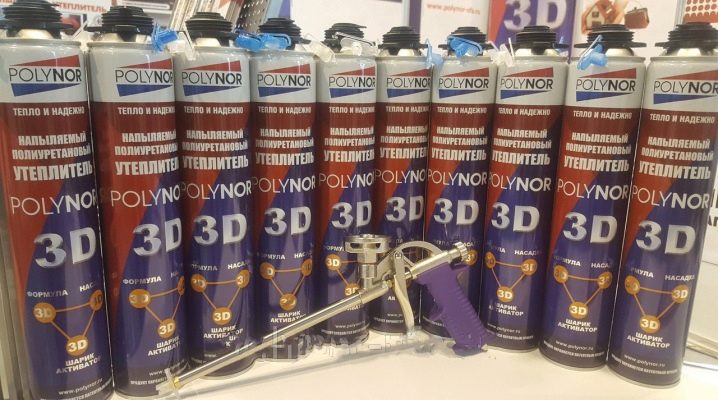
Among modern polyurethane foam insulation materials, one of the leaders is Polynor spray-on insulation, developed by Norwegian specialists. It is several positions superior to heat insulators from other manufacturers.
The high technical characteristics of this sprayed insulation allow us with good reason to consider its use as one of the most effective ways of keeping warm in the house.
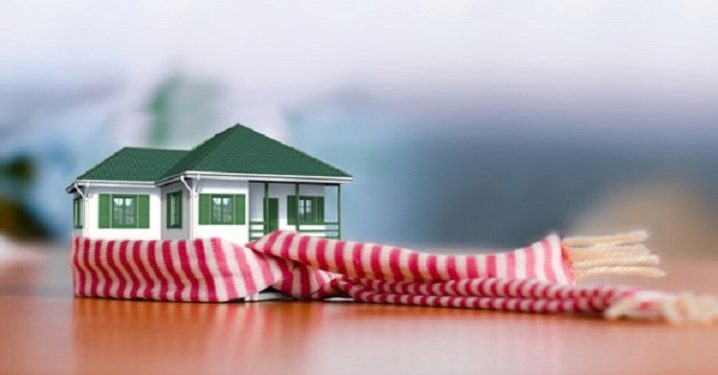
Properties and scope
It should be noted that, in general, insulation based on polyurethane foam is somewhat inferior to their classical counterparts in terms of affordability. For this reason, these heat-insulating materials have not yet received the same widespread use as heat-insulating building materials made of mineral wool, expanded polystyrene and polystyrene, the production of which is based on the extrusion method.
The issue of availability for the purchase of polyurethane insulation materials is explained by the fact that the thermal insulation of a house requires a rather large consumption of foam insulation. Until recently, such a problem was solved by attracting various contractors or in the case of an attempt to independently solve it by purchasing raw materials and special equipment, as well as the need for personal development of thermal insulation technology.
The appearance on the market of Polynor insulation radically changed the situation. Now, to insulate any, even a very large surface, the consumer does not need to resort to the services of third-party contractors and spend money on the purchase of expensive equipment.

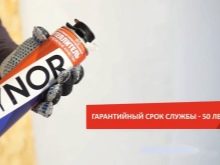
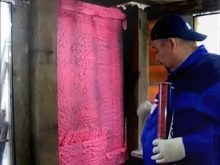
Polynor liquid foam insulation is produced by the manufacturer in compact cylinders. The consumption of the contents of one such cylinder, provided that a 6 cm thick heat-insulating layer is created, is equal to 1 m² of the treated surface area. At the same time, a comparison of the cost of Polynor thermal insulation sprayed from a cylinder with the costs of paying for the services of a third-party organization for house insulation clearly testifies in favor of the option of spraying liquid insulation.
It is known that the average estimate of the cost of insulating 1 m² with a polyurethane foam heat insulator by a team of specialists is approximately 1,000 rubles, taking into account the cost of the material and the work performed. Whereas one cylinder of Polynor insulation for the same square meter of the area of the insulated surface of the pediment or attic will cost the consumer about 500 rubles.
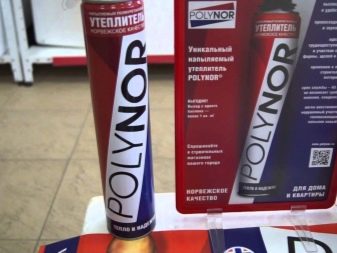
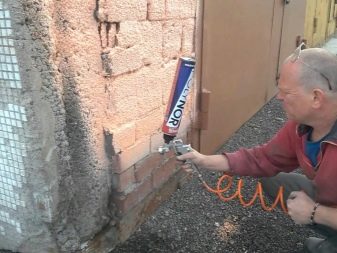
This type of heat insulator is recommended for insulating premises from the inside or outside by applying it to the inner surfaces of walls and facades of houses from any material - brick, concrete or made of gas silicate blocks. This also includes lagged floors and any coverings with a structure that does not carry a dynamic load. This heat insulator can be used to insulate the inner surfaces of pitched roofs, attics, mansard floors, foundations, plinths and basements of buildings.
Thanks to its liquid form, Polynor can be applied to absolutely any surface. Therefore, this material is successfully used for the insulation of sewer pipes and highways, both hot and cold water supply, taken outside of construction sites.
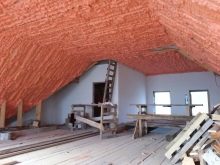
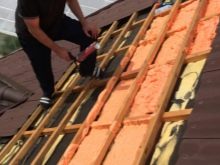
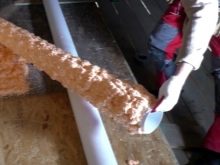
It should be borne in mind that the operational capabilities of this insulation are somewhat limited by the balloon form of its release., which does not allow creating a pressure level that allows foaming voids inside hollow walls, that is, this material is suitable only for external spraying. As for the issue of labor productivity when working with this material, according to reviews of those consumers who have already used it, during one working day one person can process Polynor about 80-100 m² of insulated surface.
In addition to the convenience and simplicity in the process of work and the high cost-effectiveness of sprayed thermal insulation of the Polynor brand, one can also highlight such its key advantages over counterparts from other manufacturers, such as the ability to quickly harden, no more than one hour, and the absence of a negative impact of this material on human health.
Polynor thermal insulation does not attract rodents as a food source. It does not create cold bridges and, with the highest efficiency in its application, does not require special expensive equipment for its installation. The closed cells of this durable material do not allow moisture and steam to pass through, and it itself, in the absence of direct contact with fire, is capable of self-extinguishing.
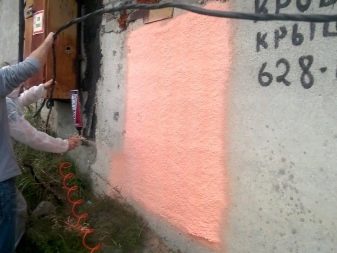
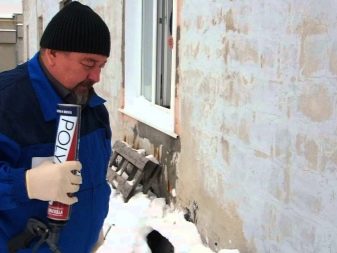
Advantages and disadvantages
This type of thermal insulation material, in comparison with analogues from other manufacturers, is distinguished by its ease of installation, which does not require the creation of a frame and the use of materials such as films, isospan, adhesive composites, fasteners, reinforcing mesh and the like. This heat insulator is conveniently used when working in hard-to-reach and spatially limited places and where there is a complex profile of the surface to be coated.
Polynor application technology does not require the use of special equipment and energy consumption. This material, which has one of the best thermal conductivity compared to similar heat insulators, also has excellent adhesion to a wide variety of building materials, from brick, concrete or wood to metal and glass.

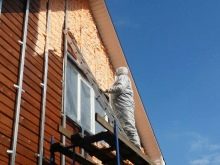

At a very high speed of coverage, when an area of 1 m² is covered with this material in one, maximum two minutes, Polynor has a low consumption rate. One cylinder with a volume of 1000 ml is enough to apply a six-centimeter layer per square meter of surface.
The polymerization process of this thermal insulator takes one hour, after which the coated Polynor surface can be painted, plastered and any other coating or protection applied to it. This environmentally friendly material does not emit harmful volatile compounds during operation, has a long working life, which, according to the manufacturer, is about 35-50 years.
In addition to the actual thermal insulation, Polynor is a noise-insulating material, rodents and insects do not like it, it is resistant to fungal mold and other biological factors.
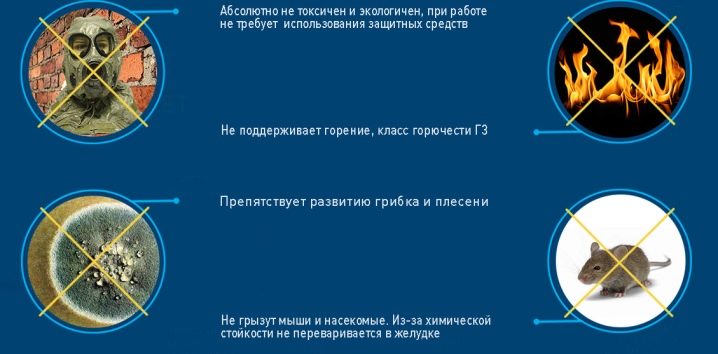
As for the disadvantages of this material, it is not resistant to direct solar ultraviolet radiation, like polyurethane foam, and is short-lived when in regular contact with water. Installation of Polynor is possible in a somewhat limited temperature range.
The process of its spraying is characterized by the difficulty in obtaining a layer of uniform thickness, as a result of which the finished coating may have non-uniform thermal conductivity. Therefore, better, more uniform spraying depends on experience with this material. In this case, the manufacturer's recommendation should be taken into account, according to which the thickness of the applied layer is limited to 6 cm.
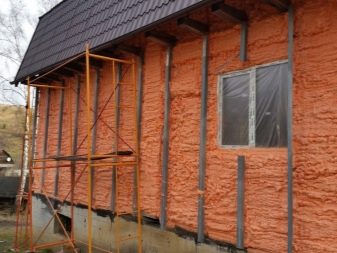

During operation, the cylinder can be used at temperatures between +18 and + 35 ° C. This waterproofer, as already mentioned, is toxic during operation, which entails the mandatory use of personal protective equipment.
Polynor is not hygroscopic, therefore there is an effect of sealing the surface covered with it, which serves as an obstacle to vapor absorption. The supply of insulation in cylinders requires a separate purchase of a construction gun equipped with a special nozzle. In case of loss or breakage of a pistol or nozzle, it will be necessary to purchase new ones, since without them the quality of the spraying process, according to the manufacturer, is significantly reduced.
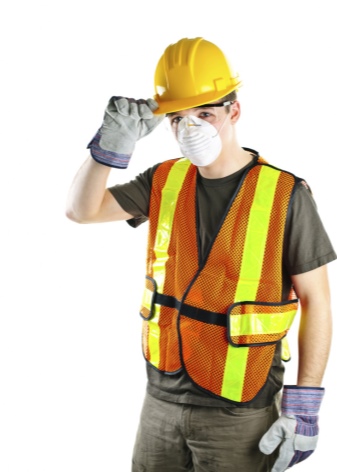

Application technology
Before you start working with Polynor to insulate an area of any surface, prepare it appropriately. For this purpose, it is necessary to carefully remove accumulations of dirt and dust from such a surface, and if there are greasy and oily stains, remove them with acetone or white spirit. Degreasing the surface to be insulated is necessary for the reason that sprayed Polynor adheres much worse to an oily surface than to a clean brick or concrete wall.
If there are any chips, potholes, cracks or other damage to the surface to be insulated, they must be sealed with cement mortar or adhesive composite. Until the moment you start working with it, the cylinder with insulation must be kept in the room for some time at an air temperature above + 18 ° C. This is done in order to prevent solidification of the working substance and to obtain a uniform layer after its application.
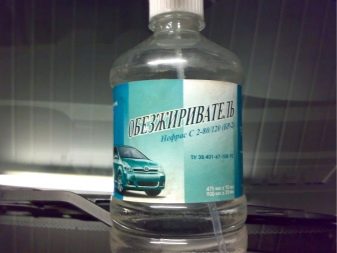
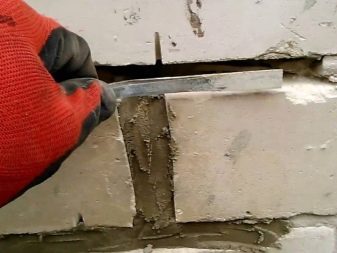
Preparing for the use of Polynor insulation consists in installing a special nozzle on the cylinder. It is put on until it clicks, after which the cover is removed from the cross and a mounting gun, purchased separately, is connected. All these manipulations are carried out provided that the packaging of the product is kept in an upright position.
From the moment of starting work and in the process of its implementation, the cylinder must be shaken periodically. Insulation is applied to the surface by spraying it by pressing the lever of the assembly gun. In this case, the resulting layer of thermal insulation should have a thickness of no more than 500 mm. At the end of this work, the gun is disconnected from the cylinder and its parts are cleaned with a liquid solvent.
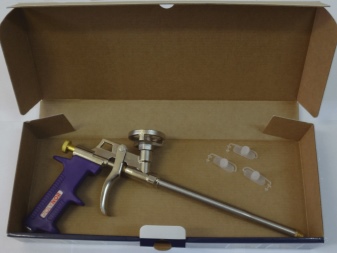
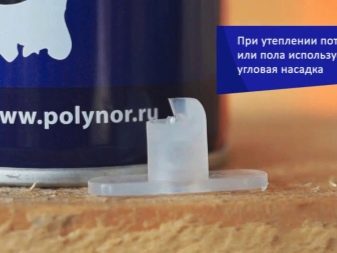
The spraying of thermal insulation must be carried out in strict accordance with safety regulations, since liquid polyurethane foam before it hardens is harmful to the human body.
It can irritate the eyes, the mucous membranes of the respiratory system and any areas of the skin where it accidentally comes into contact. Therefore, installation work with Polynor should be carried out in protective clothing, construction goggles and gloves. Each package of Polynor thermal insulation contains detailed instructions for using this material with the necessary explanations and recommendations.


About the Polynor insulation - in the next video.













The comment was sent successfully.